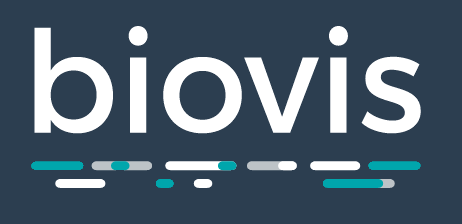Attention Presenters - please review the Speaker Information Page available here
Schedule subject to change
Monday, July 22nd
10:15 AM-10:20 AM
Opening Remarks - BioVis
Room: Boston 1/2 (Ground Floor)
10:20 AM-11:20 AM
BioVis Keynote: Visualisation as a partner to AI and machine learning in drug discovery
Room: Boston 1/2 (Ground Floor)
Presentation Overview: Show
11:20 AM-11:40 AM
Epilogos: information-theoretic navigation of multi-tissue functional genomic annotations
Room: Boston 1/2 (Ground Floor)
Presentation Overview: Show
11:40 AM-11:50 AM
GeneDMRs: an R package for Gene-based Differentially Methylated Regions analysis
Room: Boston 1/2 (Ground Floor)
Presentation Overview: Show
11:50 AM-12:00 PM
The gene Expression and Analysis Resource (gEAR) Portal
Room: Boston 1/2 (Ground Floor)
Presentation Overview: Show
12:00 PM-12:10 PM
Proactive Visual and Statistical Analysis of Genomic Data in Epiviz
Room: Boston 1/2 (Ground Floor)
Presentation Overview: Show
12:10 PM-12:20 PM
ImmuneRegulation: A web based tool for identifying human immune regulatory elements
Room: Boston 1/2 (Ground Floor)
Presentation Overview: Show
12:20 PM-12:40 PM
Poster lightning talks 1 - BioVis
Room: Boston 1/2 (Ground Floor)
2:00 PM-3:00 PM
BioVis Keynote: Physical, Contextual, and Full of Value? What do novel directions in Visualization teach us about judging the value of visualization?
Room: Boston 1/2 (Ground Floor)
Presentation Overview: Show
3:00 PM-3:20 PM
Combining programmatic visualization and interactive exploration of large phylogenetic trees using ETE toolkit
Room: Boston 1/2 (Ground Floor)
Presentation Overview: Show
3:20 PM-3:30 PM
Flud: a hybrid crowd-algorithm approach for visualizing biological networks
Room: Boston 1/2 (Ground Floor)
Presentation Overview: Show
3:30 PM-3:40 PM
Evidente – A visual analytics tool for data enrichment in SNP-based phylogenetic trees
Room: Boston 1/2 (Ground Floor)
Presentation Overview: Show
3:40 PM-3:50 PM
BioCicle: A Tool for Summarizing and Comparing Taxonomic Profiles out of Biological Sequence Alignments
Room: Boston 1/2 (Ground Floor)
Presentation Overview: Show
3:50 PM-4:00 PM
PubScore: quantifying and visualizing the literature relevance of a gene set about any topic
Room: Boston 1/2 (Ground Floor)
Presentation Overview: Show
4:40 PM-5:00 PM
Fast and curious: Efficient exploratory visualization of cross-domain interaction networks
Room: Boston 1/2 (Ground Floor)
Presentation Overview: Show
5:00 PM-5:10 PM
Density-Preserving Visualization of Single Cells
Room: Boston 1/2 (Ground Floor)
Presentation Overview: Show
5:10 PM-5:20 PM
iBioProVis: Interactive Visualization and Analysis of Compound Bioactivity Space
Room: Boston 1/2 (Ground Floor)
Presentation Overview: Show
5:20 PM-5:30 PM
BioVis Challenges session @VIS
Room: Boston 1/2 (Ground Floor)
5:30 PM-5:50 PM
Poster lightning talks 2 - BioVis
Room: Boston 1/2 (Ground Floor)
5:50 PM-6:00 PM
BioVis@VIS and Closing Remarks
Room: Boston 1/2 (Ground Floor)
6:00 PM-8:00 PM
BioVis poster session
Room: Boston 1/2 (Ground Floor)
Biography: Bonnie Berger
Many advances in modern biology revolve around automated data collection and the large resulting data sets. I am considered a pioneer in the area of bringing computer algorithms to the study of biological data, and a founder in this community that I have witnessed grow so profoundly over the last 20 years. I have made major contributions to many areas of computational biology and biomedicine, largely, though not exclusively through algorithmic insights, as demonstrated by ten thousand citations to my scientific papers and widely-used software. My research group works on diverse challenges, including and Computational Genomics, Structural Bioinformatics, High-throughput Technology Analysis and Design, Network Inference, and Data Privacy. We collaborate closely with biologists, MDs, and software engineers, implementing these new techniques in order to design experiments to maximally leverage the power of computation for biological exploration. Over the past five years I have been particularly active analyzing large and complex biological data sets; for example, my lab has played integral roles in modENCODE (non-coding RNA analysis), MPEG (biological data compression standard), and the Broad Institute’s sequence analysis efforts.
I continually and actively engage in community service, including recently as Vice President of International Society for Computational Biology, Head of the RECOMB Steering Committee, and member of the NIH NIGMS Advisory Council. I have served as both Proceedings and Conference Chairs for the two top conferences in my field— RECOMB and ISMB. I am also proud to have headed a workshop at ISMB 2016 on Gender Equality and been ISCB Fellows Chair (2015-2019), focusing on minority inclusion. I am an associate editor of Bioinformatics and IEEE/ACM TCBB journals. In addition, I serve on the Executive Editorial Board of Journal of Computational Biology and as member of the editorial boards of Annual Reviews for Biomedical Data Science, Genome Biology, Bioinformatics, IEEE/ACM TCBB, and Cell Systems.
I continually and actively engage in community service, including recently as Vice President of International Society for Computational Biology, Head of the RECOMB Steering Committee, and member of the NIH NIGMS Advisory Council. I have served as both Proceedings and Conference Chairs for the two top conferences in my field— RECOMB and ISMB. I am also proud to have headed a workshop at ISMB 2016 on Gender Equality and been ISCB Fellows Chair (2015-2019), focusing on minority inclusion. I am an associate editor of Bioinformatics and IEEE/ACM TCBB journals. In addition, I serve on the Executive Editorial Board of Journal of Computational Biology and as member of the editorial boards of Annual Reviews for Biomedical Data Science, Genome Biology, Bioinformatics, IEEE/ACM TCBB, and Cell Systems.



